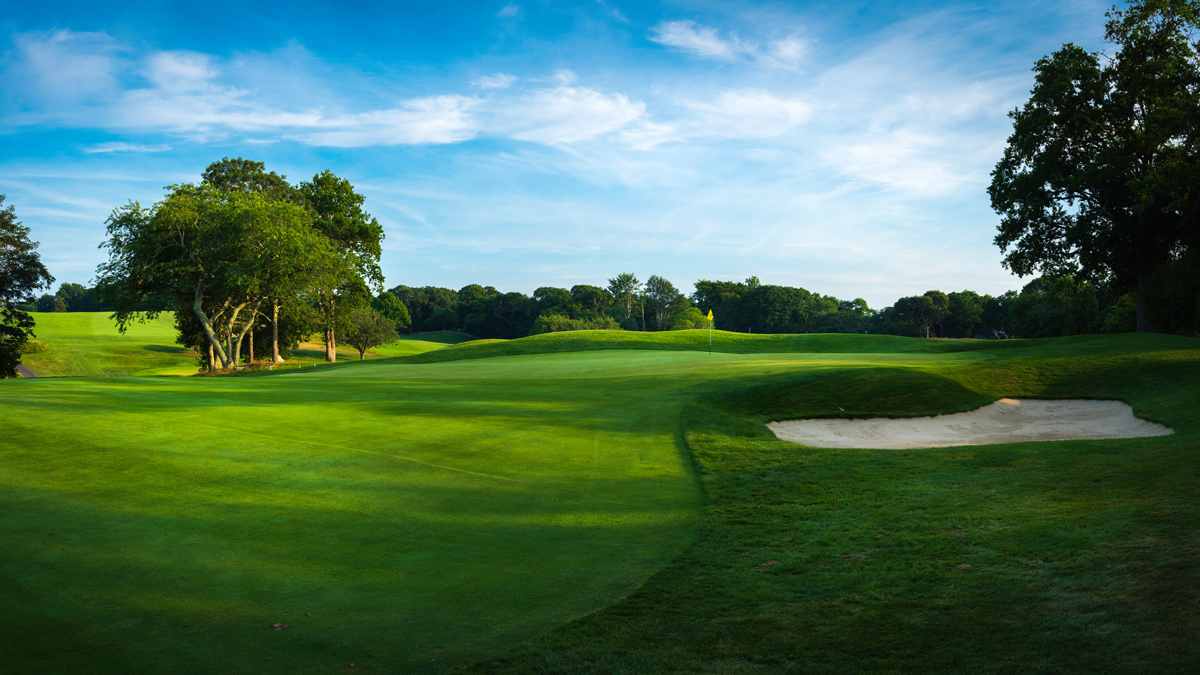The game of Golf is an ever changing sport, where precision meets passion. The art and science of golf course design has undergone a remarkable transformation since the 19th century. Those early courses, born from budget constraints and limited equipment, were carved into less than ideal terrains. This laid the foundation for golf courses for years to come.
The “Golden Age” of Golf Course Design, which spanned from the the late 19th Century to the early 20th Centaury, saw the rise to the earliest architects. These visionaries pushed the boundaries of creativity and innovation with their novel design features and styles. Not only were they able to test golfers of their time but they also left an imprint on the sport’s landscape for many generations.
At the core of this craft lies a delicate balance between artistry and science. Golf Courses are multifaceted and their design is guided by key principles: Playability, Width & Variety. However, these need to marry with nature, which serves as both the canvas and inspiration, advising architects to consider factors such as soil composition & drainage within their design.
Technology has also helped to shape the modern era of golf course design. The advancements within this field have created an age of precision and efficiency, that assist designers in the creation of golf courses with unprecedented accuracy. Yet, with this improvement comes some unique challenges that architects need to consider. They must ensure that golf courses are playable for golfers of all skill levels, navigate different environmental constraints and manage the entire construction process.

Principles of Golf Course Architecture
The art of golf course architecture is a nuanced blend of time-honoured principles and modern design considerations. These principles serve as the bedrock which golf course architects use to craft courses that challenge golfers of all skill levels.
Playability is paramount, with courses designed to offer an enjoyable and fair experience to golfers. Achieving this delicate equilibrium requires astute attention to factors like fairway width and green contours, ensuring that the course remains both accessible and thought-provoking.
Width in golf course design is a canvas for strategic play. The varying widths of fairways and landing zones present golfers with choices, adding layers of complexity and intrigue to each shot. A strategic golfer can exploit these options to their advantage, while the design must also provide opportunities for strategy, promoting thoughtful decision-making at every turn.
Variety is the spice of golf course design, ensuring that each hole possesses its own unique character and challenges. The golfer should be constantly engaged, facing a diverse array of shots, from long drives to precise pitch-and-run approaches. Yet, this variety must be balanced with naturalness, as artificial features should seamlessly blend into the landscape, preserving the course’s harmony with its surroundings.
The three distinct design schools – penal, strategic, and heroic – offer architects a range of design philosophies to draw upon. These approaches shape the course’s personality and level of difficulty, influencing the golfer’s experience.
Mackenzie’s 13 principles of golf architecture serve as a touchstone for architects, offering guidance on crafting a captivating and enduring golf course.
While aesthetics is essential, a golf course architect must also be well-versed in the practical aspects of the craft. Design, horticulture, grading, and drainage are the underpinnings of a course’s functionality and sustainability. The placement of bunkers, grass types, and the meticulous attention to slopes and contours are all part of creating a visually pleasing and playable course.
Key Challenges in Golf Course Design
Balancing Difficulty & Strategy
One of the main challenges in golf course design revolves around finding the delicate balance between difficulty and strategy. Some architects may consider narrowing fairways, shrinking greens, lengthening roughs, and introducing severe hazards to create a challenging course, but this approach may inadvertently stifle strategic thinking. The ultimate goal is to foster an environment where golfers use thoughtful decision-making and skillful play on each hole.
Compliance with Design Intent and Construction Quality
Ensuring that the final product aligns seamlessly with the intended design is a challenge architects face throughout the course’s development. This requires constant oversight and vigilance to monitor the quality of construction. Deviations from the original blueprint can compromise a course’s integrity making it imperative to uphold design intent.
Aesthetic & Playability Considerations
The aesthetics of a golf course are paramount, with the precise placement of sand, grass, hills, and slopes. Achieving this harmonious blend of natural and artificial elements is a challenge that requires both artistic sensibility and technical expertise. A playable course is equally crucial, where golfers of varying skill levels can enjoy a round without undue frustration.
Terrain & Environmental Limitations
The very nature of the landscape can present formidable obstacles in golf course development. Steep slopes, flat sites, or rocky, poor soil conditions can necessitate extensive earthworks, driving up costs and complexity. Architects must adeptly adapt their designs to suit the terrain, while minimizing disruption to the natural environment.
Conclusion
The art and science of golf course design stands as a testament to the enduring passion and innovation within golf. From the modest origins of 19th-century courses to the visionary designs of the “Golden Age,” golf course architecture has evolved into a dynamic field that marries precision with creativity.
The fundamental principles of golf course architecture, including playability, width, variety, and naturalness, serve as the guiding stars for architects seeking to create courses that captivate golfers of all skill levels.
Yet, the path to golfing excellence is not without its challenges. Architects grapple with the delicate balance between difficulty and strategy, striving to engage golfers’ minds as much as their skills. They meticulously uphold design intent while monitoring construction quality, ensuring that the course’s final form faithfully reflects their vision.
Aesthetic considerations blend seamlessly with the demand for playability, requiring architects to harmoniously integrate natural and artificial elements. They must navigate terrain and environmental limitations, leveraging their expertise to mould the course while preserving the natural surroundings.